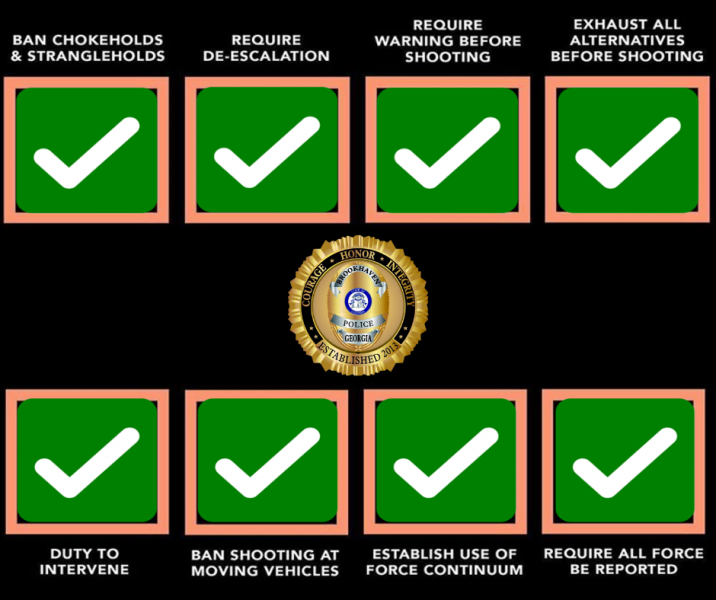Eight Areas We Address
An info-graphic similar to the one above has been brought to our attention by several social media posts and emails. We’ve blocked out part of the meme because the data has not been peer reviewed or scientifically published, and because the original research relied on an incorrect statistical function to reach its conclusion. Still, the points raised are -in many ways- good practice. We’re proud to share that BPD policy already addresses all eight of these areas:
1️⃣ Ban Chokeholds & Strangleholds: Neck restraints of all types are considered deadly force, and their use is prohibited except when the use of deadly force is authorized.
2️⃣ Require De-Escalation: BPD policy requires officers to employ de-escalation techniques to gain control of suspects and reduce resistance.
3️⃣ Require Warning Before Shooting: BPD policy requires officers to give verbal warnings whenever practical and reasonable prior to using all weapons, including: O.C. spray, batons, TASERS, less-lethal projectile launchers, and firearms.
4️⃣ Exhaust all Alternatives Before Shooting: BPD officers are prohibited from using deadly force unless they reasonably believe that they or another person are in immediate danger of sustaining a serious bodily injury or death.
5️⃣ Duty to Intervene: In addition to a moral and ethical duty, Brookhaven Police Officers have a procedural duty to intervene to stop the use of excessive force. In addition, an officer who witnesses what s/he perceives to be excessive force is required to immediately notify a supervisor and prepare a written report. The investigating supervisor must respond to the scene, complete a use of force report, and forward the allegation of excessive force immediately to the Office of Professional Standards.
6️⃣ Ban Shooting at Moving Vehicles: BPD policy requires that officers avoid, whenever possible, placing themselves in a position where the use of deadly force by discharging a firearm at a moving vehicle is the only alternative. Furthermore, officers shall not discharge their firearm at a moving vehicle unless: (1) the officer has a reasonable belief that an occupant of the vehicle poses an imminent threat of death of serious physical injury to the officer or another person or; (2) the officer has a reasonable belief that an occupant is using the vehicle in a manner that poses an imminent threat of death or serious injury to the officer or another person and there is no avenue of escape.
7️⃣ Establish Use of Force Continuum: The BPD use of force policy requires officers to continually assess the level of a suspect’s resistance, and employ only that amount of force which is reasonable and necessary to overcome such resistance.
8️⃣ Require All Force to be Reported: Every use of force involving a BPD officer is reported. A “use of force” is defined as lethal and less-than lethal force, including physical force to make an arrest or/and the mere presentation of a weapon or threat of force to gain compliance. Reports are made by the officer, and subsequently reviewed by a sergeant, lieutenant, major/division commander, and by the Office of Professional Standards before being presented to the Chief of Police. This five-part review process ensures objective assessment of each incident to ensure compliance with policies and state law.

